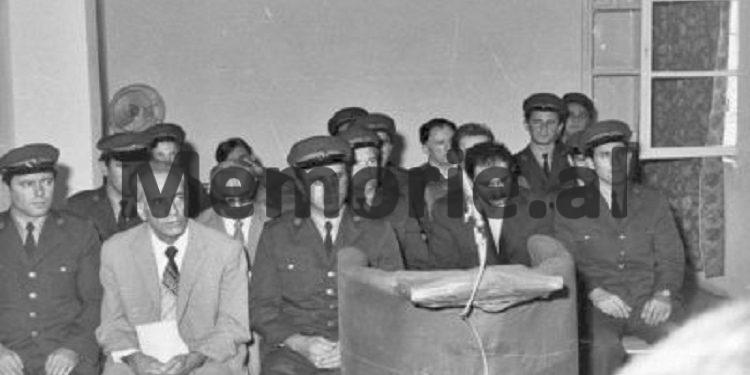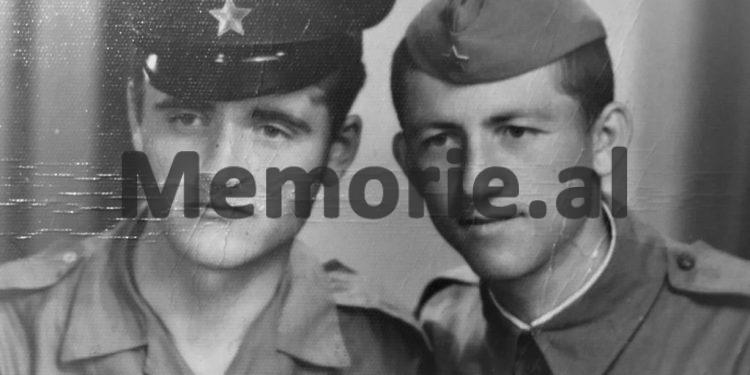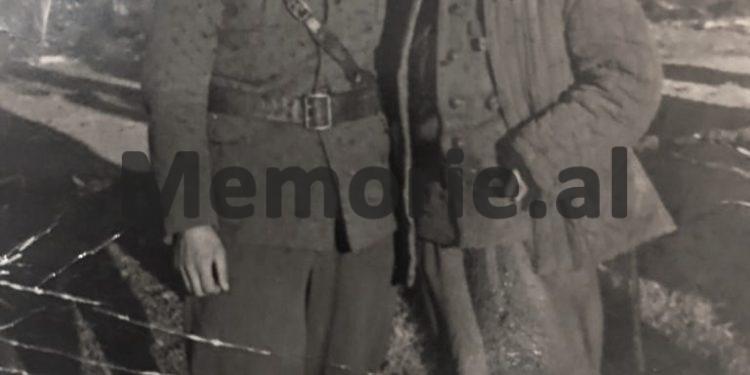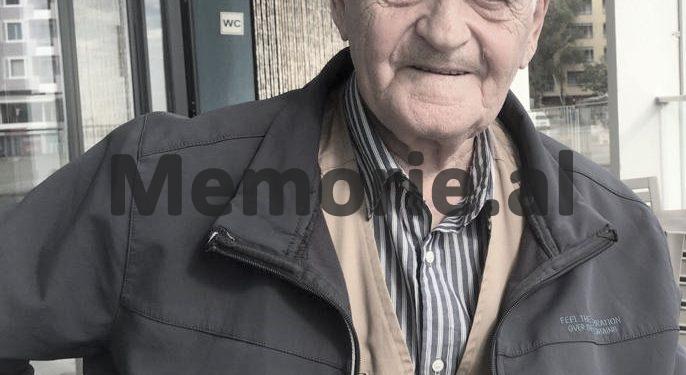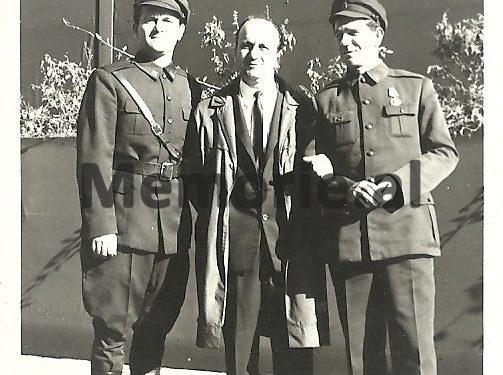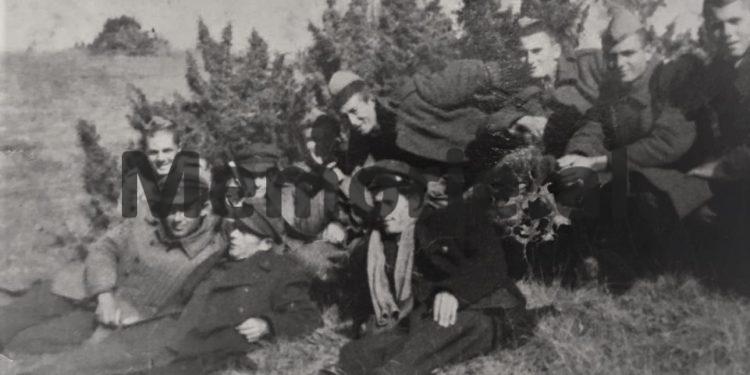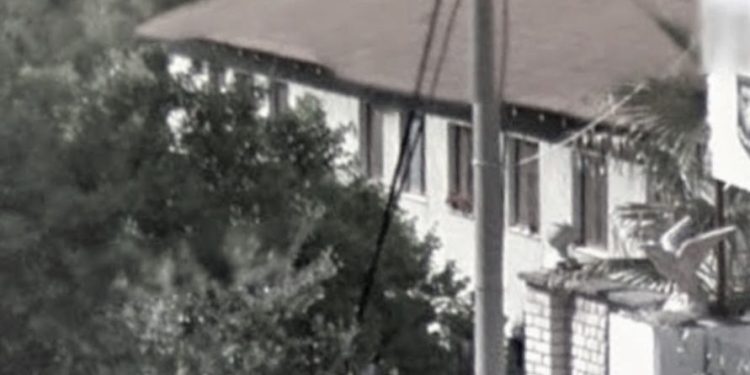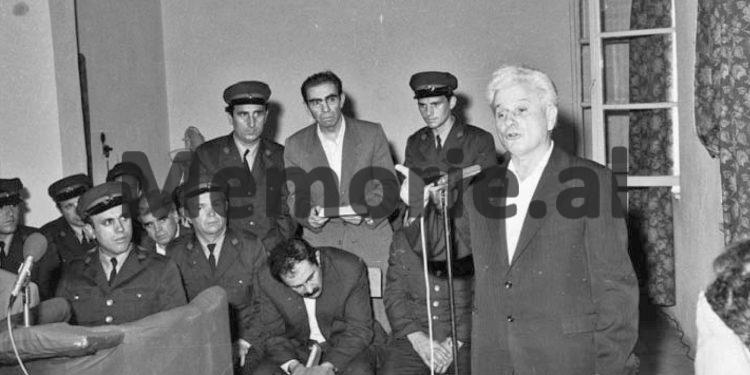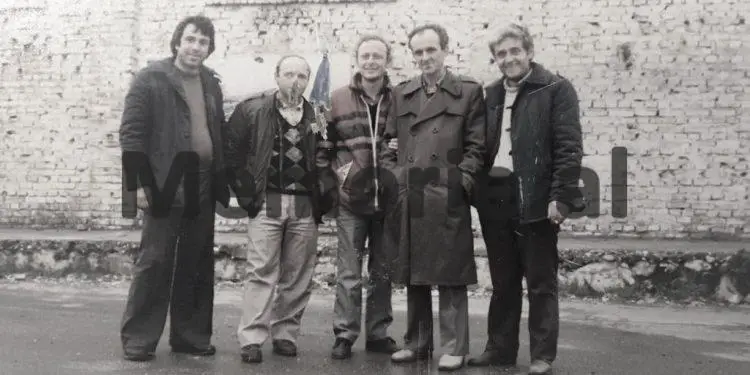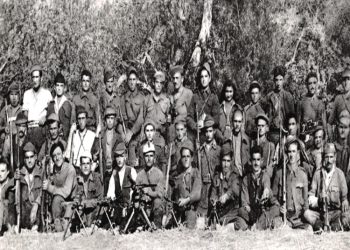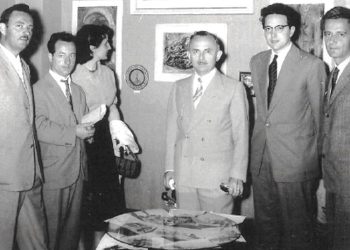By Dashnor Kaloçi
The third part
– Former officer of the Special Security Battalion of the Ministry of Internal Affairs, Halil Rrahmani, tells about the “highly secret services” that he personally performed in the years 1971-1991
Memorie.al / “Taking into account the fact that I myself served in the Tirana Prison (‘Ward 313’), as a guard officer, for the entire period of more than one year (1982-’83) during which the investigative process took place and judiciary of the so-called “Kadri Hazbiu Hostile Group”, I say with conviction that the former Prosecutor General of the Republic, Rrapi Mino, has not told the truth. He wanted to justify himself with what he said, since, during the entire period of time that we were present there, we heard screams from the convicts, which was easily understood as coming from the violence and torture that was inflicted on them. Likewise, from my fellow officers and various soldiers who served inside and outside the prison at that time, I heard that, after the trial against the “enemy group of Kadri Hazbi” (which took place inside the premises of that prison) ended , one day after the death sentences of Kadri Hazbiu, Feçor Shehu, Llambi Ziçishti and Llambi Peçini were heard from their cells, cries, shouts and screams were heard, such as: “O Enver Hoxha, help us spare our lives”, “O Hekuran Isai, help, spare our lives, don’t shoot us”, etc., of this nature. Likewise, to my knowledge, Kadri Hazbiu was taken out of Tirana prison dead on the night of September 9, 1983, and his corpse was then sent to the “Executive Committee” facility in Linza, next to the Security Battalion where were the secret tunnels where Feçor Shehu, Llambi Ziçishti and Llambi Peçini were shot, in the same place where Beqir Balluku, Petrit Dumen and Hito Çakon were also shot years ago”.
Continues from last issue
Mr. Rrahmani, to your knowledge, why did the trial against the so-called “Kadri Hazbi Hostile Group” take place in the interior of the Tirana Prison and not in the Court?
In fact, one or two court hearings took place at the Supreme Court, but then the other hearings took place within the premises of Tirana Prison (‘Ward 313’), we were told that; this was done because it was not possible to ensure the transportation of those convicts from prison to the courtroom and vice versa, since foreign intelligence was interested in kidnapping them, because they had their own agents. In this context, the two days that the hearings were held at the Supreme Court, in order to secure the road through which the convoy of cars of the Ministry of the Interior with the convicts would pass, in every place there were security men dressed in civilian clothes. This was a trick of the State Security headed by Minister Hekuran Isai, who served the senior leadership and Enver Hoxha, the first to show them that they were justly punishing Kadri Hazbiu and others but also to say in the eyes of the people, that; “how dangerous enemies they were”. What I am telling you is more than true, since the hall was ready before the first court hearing at the High Court, in Tirana prison, started.
How do you remember the moment when Kadri Hazbiu, Feçor Shehu, Llambi Ziçishti and Llambi Peçini were taken from prison and sent to be shot, what procedures were carried out?
The night they took the four of them to be shot, (from midnight on September 9 or 10, I don’t remember the exact date) we were on duty in the ward; we were notified of combat readiness. We more or less understood what was going to happen, after the trial against them was over and Arani Çela and the others of the Prosecution panel were no longer coming to the prison premises, as they had been coming for days when the trial was taking place. At 21:30 on September 9 or 10, 1983, the lights of the entire prison were first turned off. After that, they took all the soldiers who served in the guard towers and everywhere, and locked them in their dormitories. In the same way, our soldiers of ‘Department 324’ have also closed in their dormitories. In their place, State Security officers and members of the special investigative group dealing with the “Kadri Hazbiu Group” were deployed, dressed in military uniforms and armed with automatic weapons and light machine guns.
After that, several vehicles arrived from the Ministry of Internal Affairs, which were assigned to take the persons who were going to be executed, led by Kadri Hazbiu, they entered the main gate of “Kaushi” (as that place was called). , and after putting the four condemned to death in those vehicles, they left the prison, to then send them to the designated place where they would be shot. After the vehicles left, the prison lights were turned on and the soldiers were taken out of the dormitories, returning to their places.
After the 1990s, it was said in the press that Kadri Hazbiu was strangled in the prison premises, and was taken out of the prison dead that night. Do you know about this?
I, along with my military and civilian colleagues, whose names I cannot make public for many reasons, that’s how we know that Kadri Hazbiu was taken out of the prison premises dead, that night, when they took him for shot them. More about this, I cannot say, but there are still people who performed those services and are still alive, who can testify to the truth about this event. The main person who had to be asked about this was doctor Nevzat Vigani, officer, head of Health of the Ministry of Internal Affairs, who stayed almost all the time in Tirana Prison, without his signature, nothing could be done.
After the 1990s, graves and bones of those shot by the communist regime were found near “Department 324”. Did your guild have anything to do with this?
I am aware from the media in general about those burial places that were found near the ‘324 Ward’, but the Security Battalion, ‘324-a’, had nothing to do with the executions that took place before the 90s. The Directorate of Internal Affairs of Tirana, the State Security side, dealt with them. Adjacent to our ward, (about 100 meters west of it), there was an object, very secret and of special importance, known by us as the “Executive Committee of Tirana”, in case of war. There were also shootings, after the 90s, the graves and bones of those people who were shot were found. There, at the “Executive Committee”, there were also several secret tunnels, where Kadri Hazbiu, Feçor Shehu, Llambi Zicishti, Llambi Peçini, and even Beqir Balluku, Petrit Dume and Hito Çako were shot, there they were shot and then buried in various predetermined places, near or far from Tirana, as was the case of Beqir Balluku, Petri Dumas and Hito Çakos, whose corpses were then sent to Vranisht in Vlora.
How long did you serve in the Security Battalion of the Ministry of Internal Affairs and who were the main leaders of that department in those years you were there?
I served in that department from 1970 until January 1985, when I was transferred to the Rrashbull branch in Shkozet, Durrës. After Dane Binaj, who was commander of ‘Department 324’ since its creation in 1970, came Sabri Kaso, who served in that position until 1976, when Shahin Halili was appointed there, who stayed until 1980 together with the commissioner, Baze Sharkaj. In that year, in 1980, instead of Shahin Halili (who was later sentenced to prison), Sali Lila came as battalion commander, while Todi Stroni came as commissar. Commander Sali Lila came from the Guard of the Republic, where he had served for years in command duties, while Todi Stroni came from the position of deputy director of the Personnel Directorate of the Ministry of Internal Affairs, who was demoted to a biography problem. Sali Lila remained in that position, as commander of ‘Department 324’, until 1988, when he retired and Muharrem Kokona was appointed in his place. I take this opportunity to say that Commander Sali Lila, apart from being a good officer and professionally prepared as a soldier, he was also an extraordinary man. The commissar, Baze Sharkaj, was also an excellent man, as was the other commissar who came after him, Todi Stroni, a model soldier.
How long did you serve in “Department 324” and why were you fired?
They didn’t send me away; they transferred me from Tirana to Durrës, as part of the Security Battalion. I served as a platoon commander in ‘Department 324’ until January of 1985, when my command, Sali Lila, informed me that I had been appointed as the commander of ‘Department 100/1’ which was a military point located in Kodrat e Rrashbullit, and depended on the Security Battalion of the Ministry of Internal Affairs. After dinner, the Battalion courier came home and told me that; by order of the battalion commander, Sali Lila, tomorrow morning you must be in the ward, but in civilian clothes. According to the order, the next morning I showed up at the Battalion (in Linza) where Commander Sali Lila officially communicated the order to me, telling me that I had been appointed as a platoon commander in “Department 100” in Durrës.
How did you receive that appointment and what response did you give to your superior, Sali Lila?
I did not expect that appointment and at first I was surprised and told him that I could not go, as my wife was in the hospital and the small children were alone at home. But Commander Sala, blunt as he always was, told me that it was an order and had to be obeyed at all costs. That day I left for Durrës, where Commander Sali Lila introduced me to the officers, wishing me success in my new task.
Were you happy with that appointment?
My appointment in that department was an honor and a favor given to me, of course, seeing all the results I had had during all the years I had served in the Security Battalion. I say this, not because there was no work and responsibility, but it was completely different from the same task I had in ‘324-a’, starting first with clothing, since in that department, like soldiers and officers, they wore civilian clothes, etc.
What was ‘Department 100/1’, when was it created and why did it serve?
‘Department 100/1’, or as it was known differently by the officers and soldiers, but also by the residents of Durrës and the surrounding villages, as: “The department dealing with cigarette smuggling”, was created in 1970-’71, immediately with creation of the Security Battalion of the Ministry of Internal Affairs, being a military point under its authority. But the smuggling of cigarettes had been started for years by the Albanian state (from 1965, if I’m not mistaken), but until then, for loading and unloading cartons of cigarettes, as in large vehicles with trailers (“barges”) that they brought it from abroad, or even to ships and boats, they used civilian loading-unloading workers who were in the Port of Durrës, or “hamej”, who were paid by the Ministry of the Interior, for those days they worked. With the increase in the volume of work, which could no longer be handled by civilian workers, as well as the conditions of secrecy, from 1971, it was deemed necessary to do the work with soldiers and officers. That’s how this military point was created, which got the name ‘Department 100/1’, it was a platoon of soldiers with about 25 people, a commander, a non-commissioned officer, storekeepers, drivers, etc.
Who had served in that guild from its creation until you took that position?
Since 1971, several officers have served there as platoon commanders, such as: Refat Ferhati, Rexhep Belinievi (or Uka as he was otherwise known), and Mersin Rama, while as non-commissioned officers, Refat Kryeziu, Bashkim Uku, etc. While the storekeeper of the cigarette warehouses was Selaudin Qerimi, and as I said, all of them, together with the soldiers, were dressed as civilians. The soldiers of ‘Department 100/1’ were undressed and wore the soldier’s uniform only when they went out freely in the city, or when they went home with permission, except for the premises of the platoon of soldiers, dormitories, canteen, kitchen, etc. ., there were seven large warehouses, where six of them were used for storing cigarette packs, while one was empty, for any emergency.
How was cigarette smuggling carried out?
The main and only duty of ‘Department 101/1’ where I served for almost seven years was loading and unloading loads of cigarettes (‘Marlboro’, ‘LM’, ‘Puro’, ‘Lucky Strake’, ‘Chesterfield’, etc.) of large vehicles with trailers, which came to our department by land from abroad, entering the Albanian territory, from the Hani Hoti Customs Border Crossing-Control point in the district of Shkodra. Before those “barges” came to Hani e Hoti, the relevant measures were taken and on the appointed day and time, the State Security officer, Qazim, went there in his car (“FIAT”) to receive them. Mufti (or as he was otherwise known by the nickname “Sir Antonio”). Likewise, Naim Furxhiu from Tirana also went there, the man who, together with his superiors, Lorenc Nënshati (“Mr. Lorenzo”) and Mëno Dedaj, were the main bosses of ALBTRANS, who directed and carried out all smuggling operations tobacco made by the Albanian state at that time. After Naimi or Lorenci waited for those vehicles, (usually a convoy of vehicles came) they and the relevant people accompanied them along the entire national road from Shkodra to Durrës, until they came to our department, to be unloaded at the warehouses we had in readiness Then, with our vehicles of the Ministry of Internal Affairs, (with TR or DR civil license plates), we sent these loads of cigarettes to a certain place, inside the Port of Durrës, (to “Kalata Zero”) , where special persons who had previously been contracted by the Albanian state, through the directorate of ALBTRANS, would come and take them with small ships or large speedboats. Memorie.al
The next issue follows




